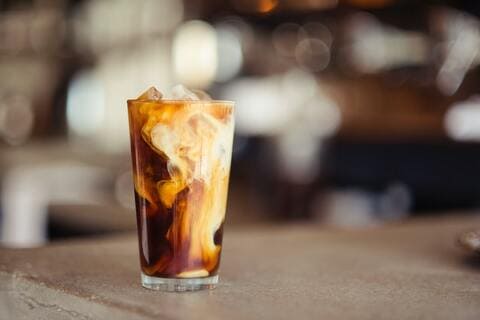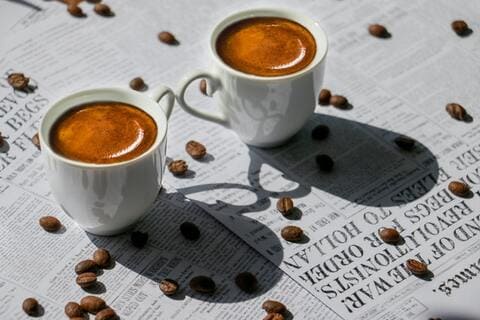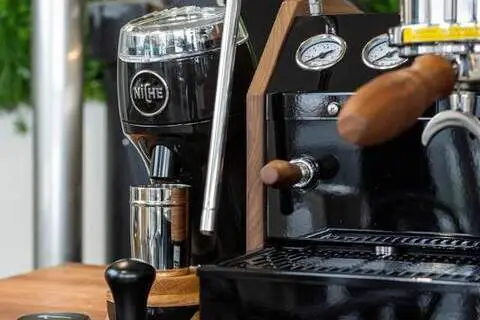As an Amazon Associate I earn from qualifying purchases. When you use our links, we may earn an affiliate commission. Learn more.
I drink espresso with steamed milk almost every day. However, when my wife asked me what is espresso, I couldn’t provide a concise answer. I consulted with experts and performed detailed research to provide a definitive answer.
Espresso is a full-bodied shot of coffee brewed by forcing almost boiling water under high pressure through finely-ground coffee beans. Although espresso has a higher density and caffeine content than regular coffee, it has less caffeine per serving because of the smaller volume serving size.
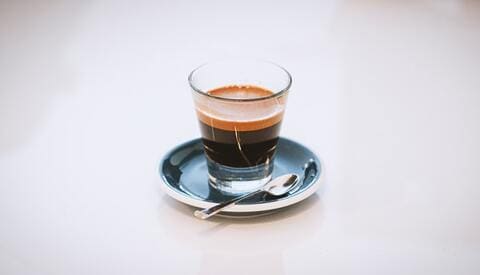
Espresso Facts:
- Country of origin: Italy
- Brewing temperature: 190 F (90C)
- Caffeine content: 65 milligrams per 1 ounce serving
- Ingredients: coffee beans and water
- Espresso is sometimes referred to as Expresso
What is espresso coffee?
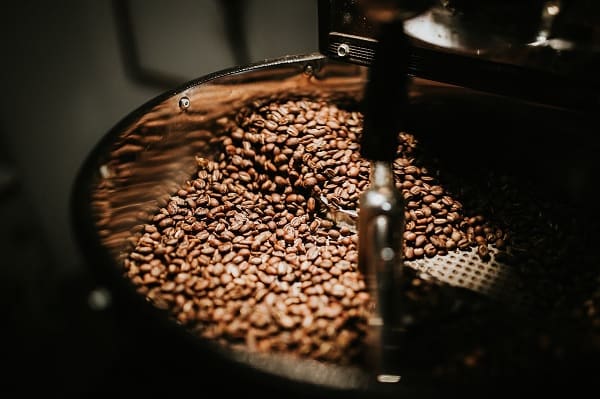
Espresso (uh-spreh-sow) is a famous brewing process that originated in Italy in the 19th century. Espresso shots are made by forcing nearly boiling water at high pressure (9 to 15 bars) through freshly ground coffee beans.
Espresso is synonymous with European coffee shops or an espresso bar.
In recent times drinking a double shot of espresso has become increasingly popular because you can use espresso shots in various coffee drinks.
READ NEXT: What is a Macchiato?
Authentic espresso-based drinks, such as macchiato, cappuccino, caffe latte, and flat white, often include steamed milk combined with a single or double shot of espresso.
Difference between Coffee and Espresso
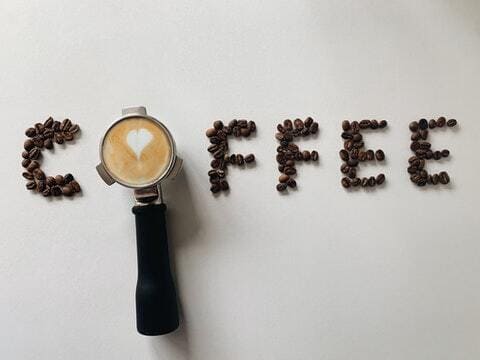
I often get asked whether there is a difference between espresso beans and coffee beans. Espresso and coffee beans are the same, and espresso preparation sets it apart from regular coffee drinks.
Specifically, there are five noteworthy differences between espresso and coffee drinks:
- Preparation – brewed coffee relies on slowly filtering the water through the ground coffee, whereas brewing espresso depends on pressure to extract the rich flavor from the espresso beans.
- Coffee beans – espresso requires a fine grind while coffee requires a coarser grind
- Taste – espresso is thicker than regular coffee with a velvety crema on top
- Extraction – regular espresso requires the use of an espresso machine (or AeroPress)
- Appearance – espresso is darker in color
Let’s look at each of these in more detail.
1. Preparation
The preparation of the espresso shot is what sets it apart from a regular coffee drink.
Other methods of brewing coffee, such as a cup of drip coffee, take time and rely on slowly filtering the water through brewed coffee grounds.
This slowness seems unusual when we think about how used we are to ordering a double shot of espresso at your local coffee shop and receiving it pretty much instantaneously.
It is, therefore, the espresso brewing method that makes it different.
YOU MAY ALSO LIKE: Ristretto vs Long Shot
Espresso machines work by pressurizing and shooting near-boiling water through finely-ground espresso beans packed into cakes.
Whereas drip coffee and French press brewing methods rely on gravity to seep the water through the ground regular coffee beans, espresso is driven downwards by pressure exerted by an espresso machine (or Moka pot), which exponentially speeds up the process.
The result is a complex, rich, and aromatic espresso shot, complete and ready to drink in under 30 seconds.
2. Ground coffee beans
Pressure comes first in espresso roast 101.
However, the size of the grounds is also a factor. Making espresso with a fine grind of a fresh, medium roast, or dark roast generally works well.
For a regular cup of roast coffee, where you are preparing coffee using the drip coffee or French press method, I recommend using a medium roast and setting your burr grinder to a coarser setting.
Of course, you can adjust this burr grinder setting if you prefer a strong coffee flavor.
The size of the grounds influences how well the espresso is extracted, as a smaller grind exposes more surface area of the beans to the water when they are packed into the coffee cake – or bed, as it’s also known.
The finely ground beans, along with the applied pressure, are what makes the process so efficient.
3. Taste
The espresso itself has a very unique, distinctive taste. If appropriately prepared, it should be thicker than regular coffee, with a velvety crema on top.
The taste should be rich and balanced, and the ideal espresso will hit the sweet spot of naturally sweet but not too bitter. It should also draw out the complexity of the flavors and should have a layered taste, with the inherent flavors being more defined.
4. Extraction
Espresso can fall into one of three categories: under-extraction, over-extraction, or ideal extraction, and this influences the flavor and whether or not it’s balanced.
- Under-extraction occurs when too little coffee is dissolved in the water, which is common when the grounds are too coarse or aren’t brewed for long enough. The resulting flavor is sour, intense, and aggressive.
- Over-extraction is when too much coffee dissolves in the water, usually due to the grounds being too fine or the brew time too long, which will cause the espresso to taste bitter, weak, and flat.
- Ideal extraction is the sweet spot in between these two.
This free cheat sheet will improve your coffee brew by providing quick information on brew ratio, grind size, optimal brewing time, and more.
5. Appearance
Espresso is dark in color, traditionally served in a petite – roughly 1.6 oz – cup, which looks like a shot glass. On the surface of the espresso should be a thick layer of crema – the indication of a well-extracted espresso.
READ NEXT: How to make espresso without an espresso machine
People Also Ask
What is an espresso shot?
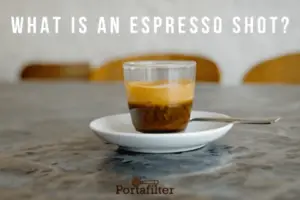
An espresso shot is 30 ml of espresso, which has been “pulled” by an espresso machine forcing hot water under pressure through finely-ground coffee beans. An espresso shot is typically served as a single or double-shot, containing 1 ounce (30ml) or 2 ounces (60ml) of espresso.
Is espresso stronger than coffee?
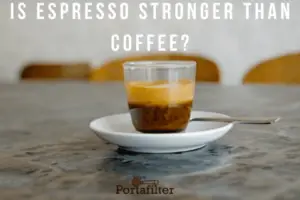
Most people think of espresso as the go-to caffeine kick. However, espresso contains around 60mg of caffeine per shot – less than a quarter of your recommended daily intake. Surprisingly, you’re getting less caffeine from an espresso than from a 12oz cup from a drip coffee.
The drink has also been proven to have a range of health benefits. Espresso has been shown to improve long-term memory and concentration and could even reduce your risk of stroke and type 2 diabetes.
On the other hand, too much caffeine isn’t good for anyone, and you don’t want to be knocking back espresso after espresso all day long. Too much caffeine can cause sleeping issues, increase blood pressure, and even heighten insomnia symptoms. Like anything, espresso in moderation is the key here.
Is a shot of espresso the same as coffee?
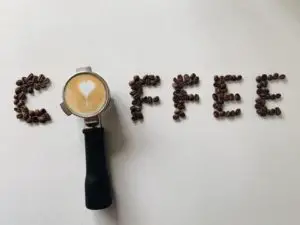
A shot of espresso is not the same as coffee. An espresso shot is made by passing very hot water through finely-ground espresso beans under pressure to extract the rich flavor of the beans.
Coffee is made by filtering water through coffee beans using, for example, the drip coffee or French press method.
How is espresso different than coffee?
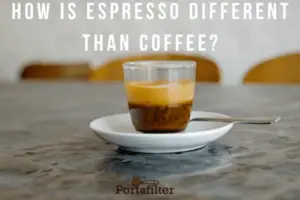
The difference between espresso and coffee is due to the brewing process. Brewed espresso requires extraction of finely ground coffee under pressure exerted by an espresso machine, while regular brewed coffee relies on slowly filtering the water through coffee grounds.
Is espresso the same as Nescafe?
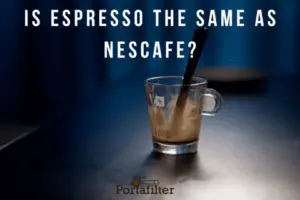
The difference between espresso and instant coffee is that espresso is made from a higher-quality Arabica coffee bean, resulting in a darker and more robust flavor than instant coffees, such as Nescafe, made from Robusta beans or a blend of Arabica and Robusta.
References:
- https://www.roastycoffee.com/coffee-espresso/
- https://en.wikipedia.org/wiki/Espresso
- https://longandshort.london/how-to-taste-a-good-espresso-coffee-extraction-101/
This free cheat sheet will improve your coffee brew by providing quick information on brew ratio, grind size, optimal brewing time, and more.
